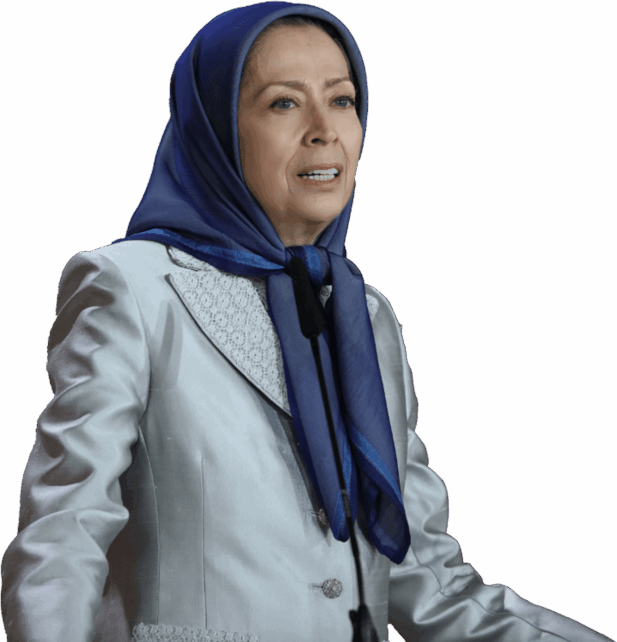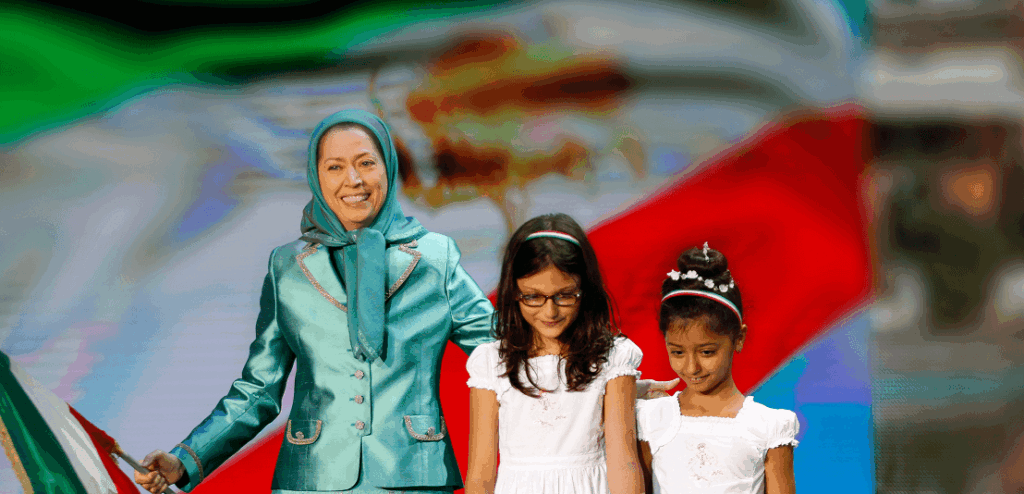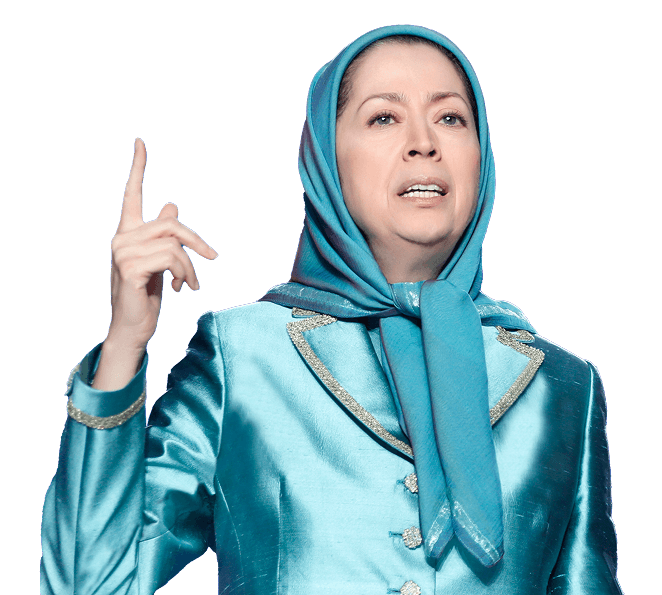The goal is to transfer power to the Iranian people.

Maryam Rajavi is not just a leader—an extraordinary visionary, she is a symbol of hope and courage for a free and democratic Iran. As the President-elect of the National Council of Resistance of Iran (NCRI), she has dedicated her life to transforming ideals into action: fearlessly fighting for justice, gender equality, and human rights.
Through immense personal sacrifice and unwavering resilience, Maryam Rajavi has stood firm against tyranny, inspiring millions by proving that with determination, even the harshest oppression can be challenged.

Maryam Rajavi was born in Tehran, Iran, in 1953, into a middle-class family known for its intellectual and cultural engagement. Raised in an environment that emphasized education and civic responsibility, she developed an early awareness of social injustice and inequality—particularly the plight of women under the Shah’s regime. She pursued her studies in metallurgy at the Sharif University of Technology in Tehran, one of Iran’s top institutions.
In the bustling energy of Tehran in the early 1970s, a young Maryam walked onto the campus of Sharif University of Technology — not just to pursue a degree, but to find her place in the destiny of her country.
At just 19 years old, inspired by growing awareness of injustice, she threw herself into the student movement opposing the Shah’s dictatorship.
Maryam’s academic excellence matched her determination. She graduated with honors in Metallurgical Engineering, as her activism grew deeper. The struggle soon turned personal: in 1973, her brother was arrested, and two years later, her beloved sister Narges was killed by SAVAK, the Shah’s notorious secret police.
As a result of her early engagement with the opposition, she joined the People’s Mojahedin Organization of Iran (MEK/PMOI) in 1977, a progressive Islamic-democratic movement dedicated to overthrowing tyranny and establishing democracy and equality in Iran. This marked the beginning of a lifelong journey in political resistance and advocacy.
By the time Iran’s revolution exploded onto the streets in 1979, she was already a recognized organizer among students fighting for freedom.
Maryam Rajavi rose through the ranks of the MEK due to her unwavering dedication, clarity of vision, and leadership qualities.
In 1985, she became the first woman to lead a major Iranian political organization, taking up the role of co-leader of the PMOI. By 1989, she was elected Secretary-General, ushering in a historic era of women’s leadership.
Under her guidance, a new generation of Iranian women rose to command positions within the resistance. In 1993, she announced the creation of a Leadership Council formed entirely of women — a revolutionary statement against the Iranian regime’s misogyny.

In 1993, she was elected President-elect of the National Council of Resistance of Iran (NCRI) for the two-year transitional period after the fall of the regime and for the transfer of sovereignty to the people of Iran.
A woman leading the charge for a secular, democratic Iran: it was a vision that inspired countless Iranians.
The NCRI — a broad coalition of Iranian opposition groups aiming to establish a democratic, secular, and pluralistic republic in Iran, has become the most organized and credible voice of the Iranian opposition on the global stage.
Maryam Rajavi’s leadership drew an extraordinary alliance of global support: over 4,000 lawmakers — including majorities of 34 national legislatures — 140 former heads of State, 80 Nobel Laureates have backed her vision for Iran’s future.
She has spearheaded campaigns to designate the IRGC as a terrorist organization, to sanction Iran’s human rights violators, and to expose the regime’s nuclear program and destabilizing activities in the Middle East.
She built alliances among Muslim communities against fundamentalism and has spoken at international gatherings bringing together tens of thousands into the streets for freedom.
Every speech, every rally, every conference has carried the voice of a nation longing for change.
Today, Maryam Rajavi leads the best organized and most powerful opposition force to the clerical regime in Iran. She enjoys the selfless support of tens of thousands of the most informed, best educated, and most dedicated Iranians inside the country and abroad who have devoted their lives to a free, democratic, and pluralist Iran.
Maryam Rajavi stands not just as a political leader, but as the symbol of Iran’s enduring dream: A free, democratic, secular republic — where no dictatorship, monarchic or religious, can ever again crush the people’s will.
Her journey, forged through loss, sacrifice, and steadfast courage, continues to inspire Iranians and freedom-lovers across the world.
Maryam Rajavi’s life is a testament to one simple, powerful truth: In the face of the misogynist mullahs, Maryam Rajavi is the face of Iran to be.
Her human rights agenda and vision for a free Iran
Maryam Rajavi’s vision is rooted in a future Iran defined by freedom, equality, and justice—a stark contrast to the current theocratic regime. Her legacy is being shaped by her unwavering stand for women’s rights, her call for the abolition of the death penalty, and her blueprint for a secular, democratic Iran.
At the heart of her political philosophy is the belief that religion must be separated from the state, and that all citizens—regardless of gender, ethnicity, religion, or political belief—should enjoy equal rights under the law. She advocates for a pluralistic political system, freedom of expression, gender equality, and the establishment of an independent judiciary.
Her renowned Ten-Point Plan outlines the democratic framework she envisions for post-regime Iran, which includes free elections, respect for individual liberties, and the empowerment of women across all spheres of life. It is a roadmap for peaceful transition, national reconciliation, and building a modern, inclusive state.
Maryam Rajavi’s enduring legacy is not just in her resistance but in her hope—a hope shared by millions of Iranians inside and outside the country—that Iran will one day rise as a beacon of democracy in the Middle East.
